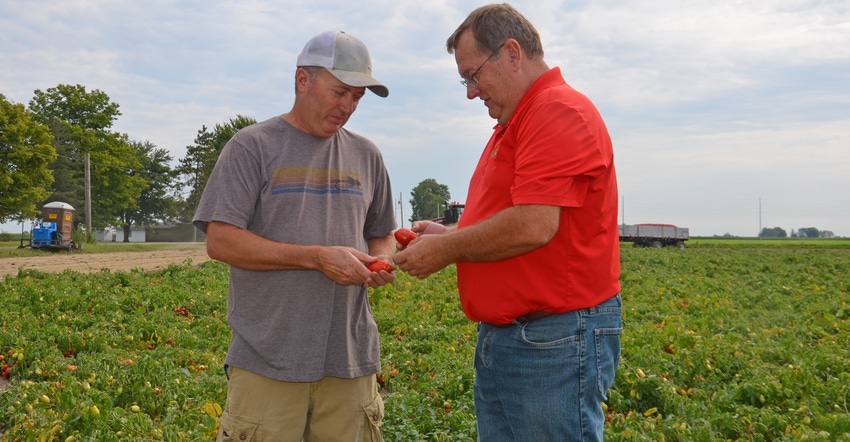
If you raise corn and soybeans, you’ve likely never gone through a year like 2019. Steve Smith says it wasn’t a picnic for tomato growers, either. Of course, the weather was challenging, but Red Gold isn’t immune from the trade war either, though for totally different reasons than commodity producers.
The family-owned company based in Elwood, Ind., is one of the major U.S. tomato producers through contract farmers, and one of the leading manufacturers and distributors of canned and processed tomato products in the country. Smith, now in his 31st season, is senior director of agriculture.
“The biggest impact on our growers was late planting,” Smith says. “Normally, about the last 25% of the crop is planted in June. This year about two-thirds was planted in June.”
Tomatoes don’t necessarily drop off in yield due to late planting like corn and soybeans do — assuming the crop matures before frost, that is. “Tomatoes are sensitive to frost, but it depends on how cool it gets, for how long and what happens weather-wise following the frost event,” Smith explains. “The last two-thirds of the crop planted this year really had good yield potential.”
The company average yield over time for all growers is 35.4 tons per acre. This year, yield was off somewhat on the first third of the crop because it was subjected to wetter weather than the rest of the crop.
“A good tomato season features lots of warm, sunny days with precipitation on the dry side,” Smith says. “We get hurt the most in wet years. That’s why the later-planted tomatoes this year tended to yield more than the ones planted in May.”
Short on acres
If you didn’t get all your acres planted to corn or beans, you’re not alone. Ray Utterback and his dad, Ron, Frankton, Ind., didn’t get all the acres they intended to put into tomatoes planted either. The Utterbacks raise tomatoes on land owned by Red Gold, but they also raise tomatoes elsewhere.
“We didn’t get them all in,” Ray says. “It was just one of those things.”
As a company, Smith says Red Gold normally contracts for about 11,000 acres to be grown by 43 producers. This year, about 20% of the intended acreage didn’t get planted.
However, that doesn’t mean there will be a tomato shortage, Smith says. They typically allow for situations that might affect production. So even if yields are off or acres are down, they’ll still have sufficient supplies to meet demand until next season.
Keeping track of things like acres grown, planting dates and scheduling with individual growers so all tomatoes aren’t ready to pick and process at once falls to Smith and his three staff members. They also work with growers to make sure fungicides are applied at the right time and assist with any other issues that arise.
Trade issues
Nearly all of Red Gold’s tomato products are consumed within the U.S. The company ships products to 48 states. So why would a trade war with China affect Red Gold?
“It’s on the input side,” Smith explains. “One of our costs is for cans, and cans are made of steel. Tariffs on steel impact us on the expense side.”
Right now, the tariff on steel is costing the company an extra 2 cents per can, he notes. In a volume business with thin margins, pennies matter.
About the Author(s)
You May Also Like




